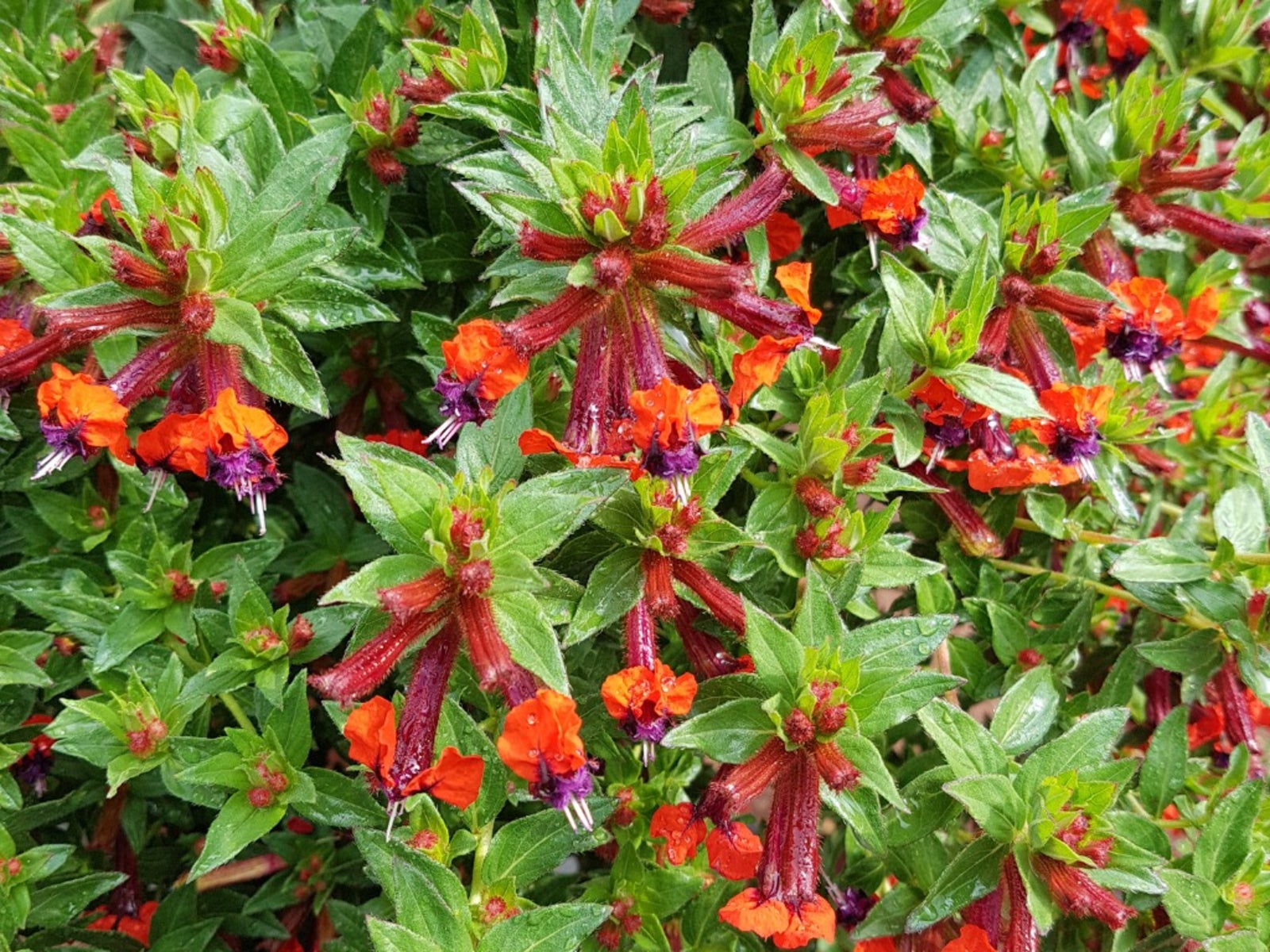Cuphea Plant Info: Growing And Caring For Bat Faced Plants


Native to Central America and Mexico, bat face cuphea plant (Cuphea llavea) is named for its interesting little bat-faced blooms of deep purple and bright red. The dense, bright green foliage provides a perfect backdrop for the masses of colorful, nectar-rich flowers that attract hummingbirds and butterflies. Bat face cuphea reaches mature heights of 18 to 24 inches (45-60 cm.) with a spread of 12 to 18 inches (30-45 cm.). Read on for helpful information about growing a bat faced cuphea flower.
Cuphea Plant Info
Cuphea is perennial only in the warm climates of USDA plant hardiness zone 10 and above, but you can grow the plant as an annual if you live in a cooler climate. If you have a bright window, you may be able to bring the plant indoors for the winter.
Growing a Bat Face Cuphea Flower
The easiest way to grow cuphea flowers is to purchase bedding plants at a nursery or garden center. Otherwise, start seeds indoors 10 to 12 weeks before the last hard frost in your area. Plant bat face cuphea in full sunlight and the plant will reward you with color throughout the season. However, if your climate is extremely hot, a little afternoon shade won't hurt. The soil should be well drained. Dig in a few inches (7.5 cm.) of manure or compost before planting to accommodate cuphea's need for rich organic matter.
Bat Face Plant Care
Caring for bat faced plants isn't complicated. Water the plant regularly until the roots are well established. At that point, the plant will do fine with less water and will tolerate occasional periods of drought. Feed cuphea monthly during the growing season, using a high quality, all-purpose fertilizer. Alternatively, provide a slow-release fertilizer in spring. Pinch the stem tips when the plants are 8 to 10 inches (20-25 cm.) tall to create a compact, bushy plant. If you live in a borderline climate of USDA zone 8 or 9, you may be able to overwinter bat face plant by protecting the roots with a layer of mulch - such as dry, chopped leaves or bark chips. The plant may die down, but with protection, it should rebound when temperatures rise in spring.
Sign up for the Gardening Know How newsletter today and receive a free copy of our e-book "How to Grow Delicious Tomatoes".

A Credentialed Garden Writer, Mary H. Dyer was with Gardening Know How in the very beginning, publishing articles as early as 2007.